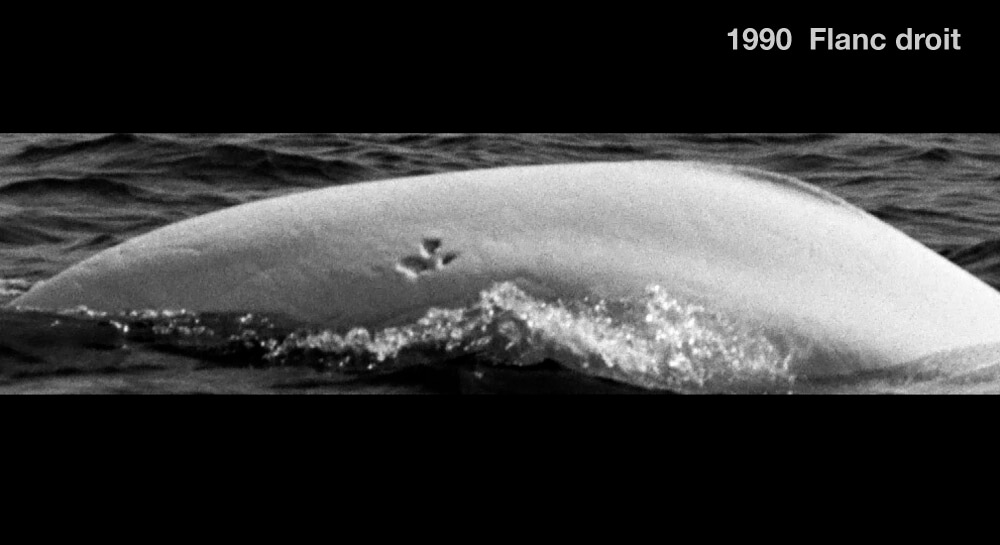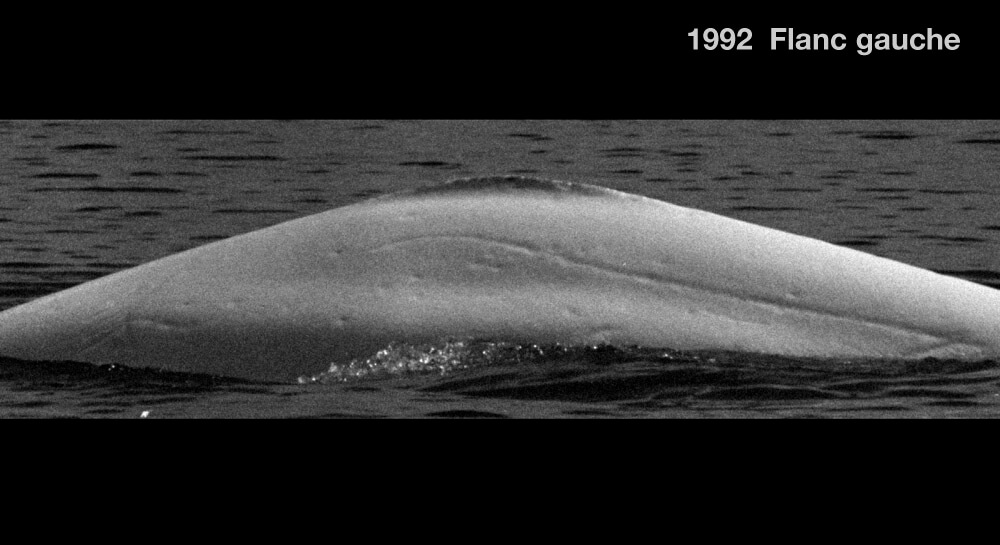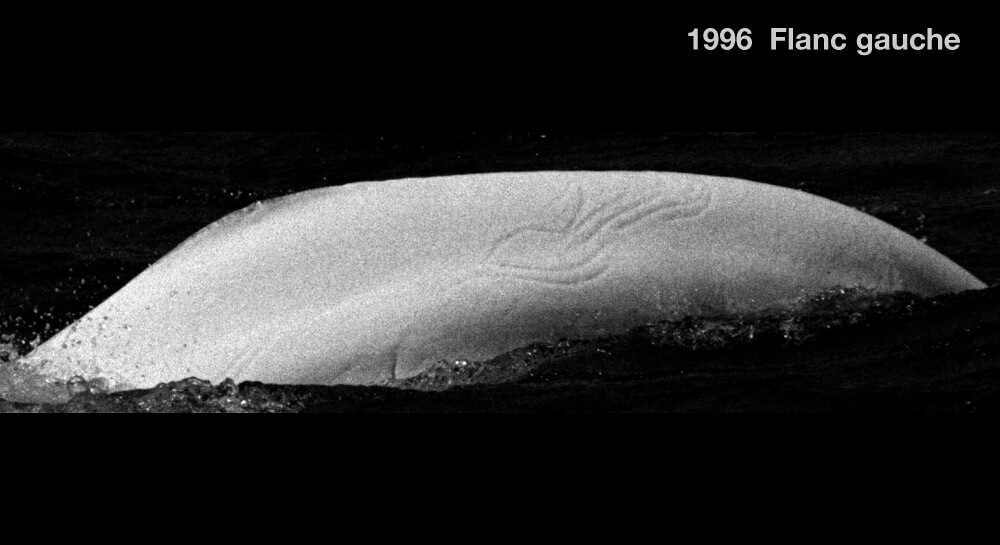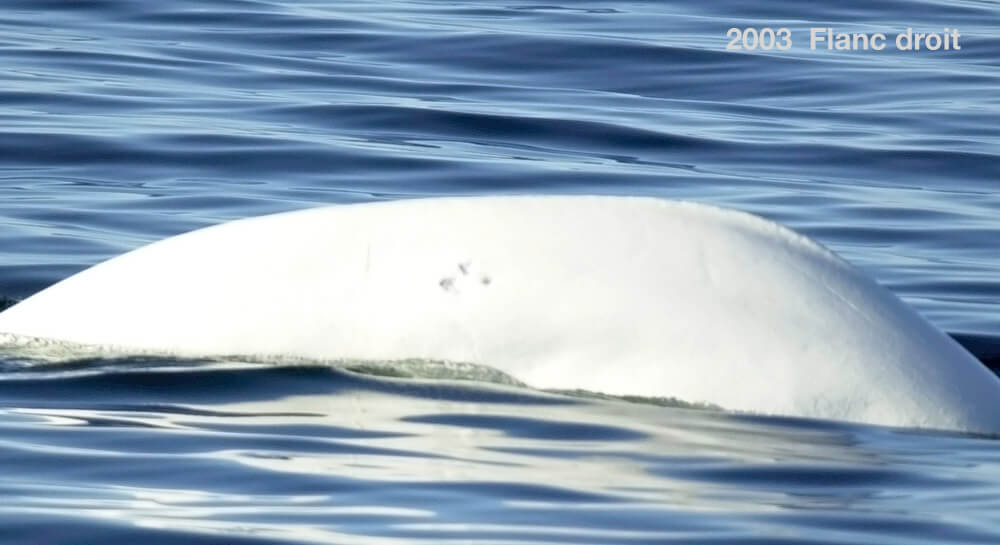Trèfle
Beluga

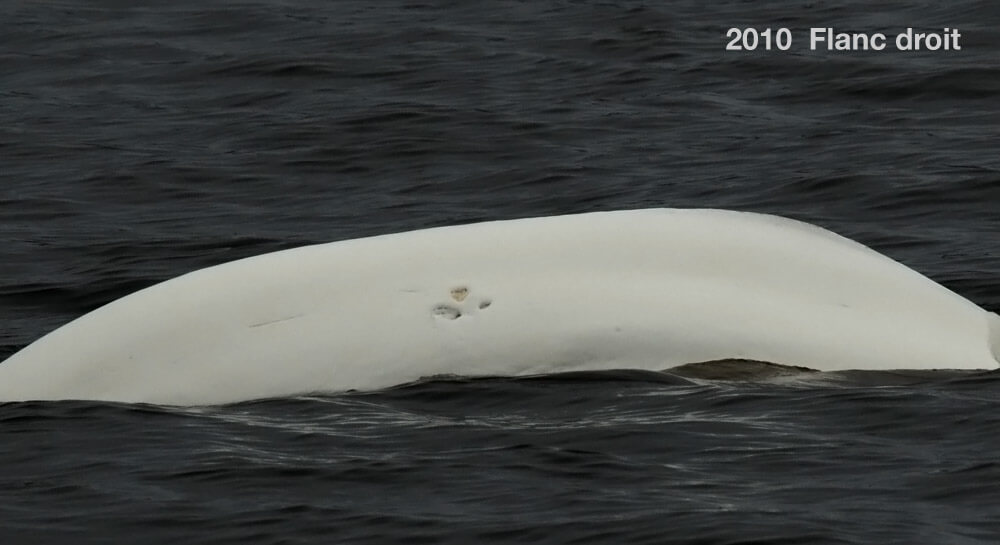
Adopted by Matthew Ralph Kane Foundation
-
ID number
DL0045
-
Sex
Male
-
Year of birth
Before 1974
-
Known Since
1988
Distinctive traits
The cloverleaf-shaped scar on the right flank inspired the name given to DL0045. To recognize him from the left flank, you need to look closely at the dorsal ridge for the slight depressions towards the end.
Life history
When Trèfle was first photographed in 1988, he was already immaculately white. He was therefore born before 1974.
His large size and the company he keeps suggest that he is a male. He’s part of a network of males known as the “Downstream boys”, regularly seen between Tadoussac and Les Escoumins.
There are two networks of males that frequent the head of the Laurentian Channel and the Saguenay Fjord. Another network of males, the “Downstream boys”, also use the head of the channel and the downstream portion of the estuary. Although their territories overlap, individuals from one network have very little contact with males from other networks. Within these networks, there are bands, i.e. small groups of males regularly seen together.
Observations history in the Estuary
Years in which the animal was not observed Years in which the animal was observed
Latest news
We were cruising along the mouth of the Saguenay near îlet aux Morts when we spotted Trèfle in a flock of around sixty individuals, white adults and young gray adults. We also recognize Nics – a Saguenay male with his mate DL0218 – while Trèfle is a male from the “Downstream boys” network, particularly observed between Tadoussac and Les Escoumins.
The animals are very active : a “scene” representative of our encounters with herds of young males. Some belugas raise their heads to the surface, as if to spy on us, while others raise their tails out of the water. They dive and rise several times in a current bar, probably where the prey is trapped. An hour later, the tide reverses and the current bar eases. The animals’ behavior changes : they move very slowly downstream, taking advantage of the ebbing tide.
South of Île Rouge. A herd of females accompanied by youngsters, including two calves and two bleuvets, swim in circles, without any apparent movement. In the center of the herd, a large group, 8 whites and 4 large grays, come and go in tight formation. Clearly, from their size, they are males. As autumn approaches, mixed herds are becoming more frequent. Several individuals were identified during the contact : Miss Frontenac, Tadou, Nics… and Trèfle… whom we hadn’t seen since 2010.
Sponsor
Matthew Ralph Kane Foundation adopted Trèfle (1988).

